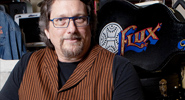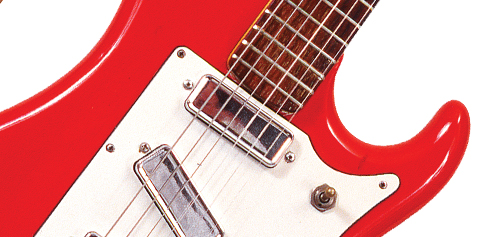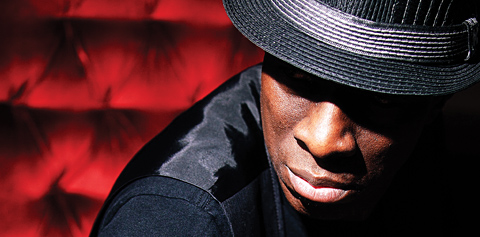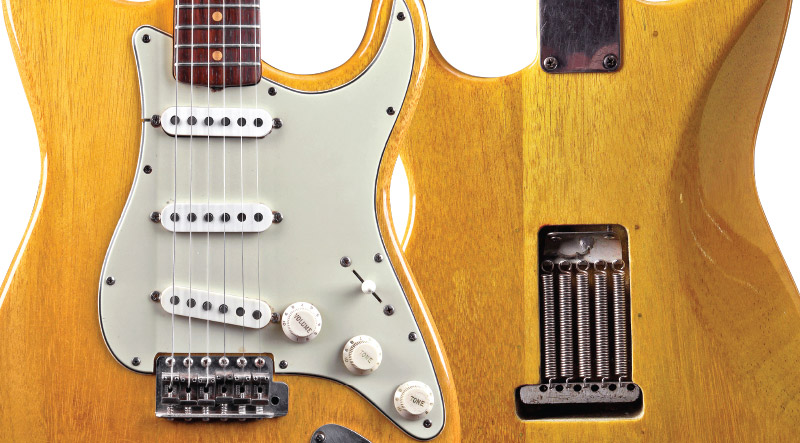
Francis Rossi live: Christie Goodwin.
“I’m only as good now as I should have been when I was 25,” laughs Francis Rossi, the 64-year-old lead guitarist, singer, and co-composer in Status Quo. “That’s why I practice at least two hours every night. I’ll watch some guitarist in a band opening for us and think, ‘I can’t bloody watch this,’ because I can’t possibly follow him.”
It sounds incredibly modest for someone whose band recently released its 100th single in Britain (more than 60 of which have charted, with 22 reaching the U.K. Top 10) and has sold nearly 130 million records worldwide. Status Quo is so revered in its native country, that Rossi and rhythm guitarist Rick Parfitt have been awarded the Order Of The British Empire.
Rossi, born May 29, 1949, in London, co-formed the band that morphed into Status Quo under the Scorpions moniker in 1962. In ’67, as psychedelic music entered the British and American charts, the band’s name was changed to Traffic Jam, then, to avoid being mistaken for Steve Winwood’s band, Traffic, management suggested they dub themselves Status Quo. The following year, the band enjoyed its only American hit to date, “Pictures Of Matchstick Men,” highlighted by Rossi’s memorable guitar break. Parfitt joined Quo shortly after, and the duo has been the backbone of the band ever since.
In addition to his body of work with Status Quo, Rossi has released a pair of solo albums; 1996’s King Of The Doghouse, and One Step At A Time three years ago. One of Britain’s most outrageous rock stars, in 1967 he paid £70 for the ’57 Fender Telecaster that helped him become an iconic musical fixture in England.
As a youngster, who were the first artists to make an indelible impression on you?
Those who really made me want to learn guitar were The Everly Brothers, because they accompanied themselves on acoustics; I just wanted sing and strum. I thought they were the donkey’s knob, which is a British expression meaning very good. I was also very keen on Bruce Welch from The Shadows because he played rhythm (guitar), and that’s what I thought I could do. I never imagined I could learn to be a lead guitarist.
I grew up in an Italian family that listened mostly to Italian opera. I heard Radio Luxembourg, and that was it, really. There wasn’t much pop music for me to get. It wasn’t until later, when I went to the States, that I realized that most of the music I liked was by country artists or country-influenced artists that had pop hits. Americans piss me off because they’ve got such strong voices (laughs)! And the country singers – they’re damn good!
Since you’re so identified as a Telecaster player, was James Burton an early influence?
I wasn’t aware of people like him. I wasn’t one of those guys who made an effort to search out music, probably because I’m so bloody lazy. I didn’t know about people like Robert Johnson or the obscure American blues guys. I eventually got it from people like Rory Gallagher and Peter Green, Fleetwood’s Mac’s original guitarist. So, I was getting it third-hand from white boys who got it from black boys.
What was your first guitar?
When I was very young, my dad bought me a Guild Starfire, then a stereo Gibson. Later, I was doing things with Pete Ham from Badfinger, and he had this black-and-green Grimshaw, which was kind of a Les Paul copy. I loved it, and swapped my cheap guitar in return for his, but then the bridge collapsed and it was no good. I was in Scotland, and at that time you couldn’t get guitars repaired so easily. So, I tried these two Telescasters for a week, and asked our roadie, “Which one shall I keep?” He told me to keep the one with the sunburst. I still own it and have this love-hate relationship with it because it doesn’t stay in tune. However, onstage, it’s absolutely wonderful. So, the chances of my changing guitars now are very remote.
What’s the story behind your trademark green Telecaster?
Well, the first thing I did after buying it was to sand it down. I had this cheap furniture polish my wife had bought, so I decided to paint it black. Well, at first it looked fantastic, but by the time I got to our gig, it looked really horrible. So, I took it back home and painted it green. I’ve never actually finished painting it, and it’s in a terrible state, but the real joy of it is that I realized early on that no one would want to knick it. Generally, people who steal guitars are not guitar players. They’re usually punters. So, if they saw a nice, shiny glitzy guitar, they would pick that up first before knicking my funny-looking Telecaster with splits in it and shavings missing.
What changes have you made since purchasing it 46 years ago?
The only things that are different now are the machine heads. We only changed them for the first time around 15 years ago. Now, it seems we have to change them every year or two. I sometimes have problems with the bottom E string, but why the machine should roll sharp, is against all laws of physics.
Do you still use it for recording?
No, I don’t. You know, the other day I was talking with this longtime fan of ours, and he seemed so broken hearted because I said I hadn’t played it on any Status Quo recordings for over 25 years. I have various other Telecasters I use in the studio, but I can only use the trademark Tele onstage because it doesn’t really sound that good anymore. Other Teles sound better, feel better, play better, and I’ve really tried playing them onstage with a live rig. I don’t know why, but then I feel like a fish out of water… or maybe it’s just that I’m out of my normal comfort zone. So, I always go back to the green Tele.

What type of gear do you use onstage?
Using in-ear monitors was a bit weird for me at first, but they’re definitely the way to go. We used to have lots of Marshall 800 heads behind us, but now I only keep one in the back, in case I need it. We keep an AC30 and then there’s a simulator, which goes straight to my ears. The simulator just sweetens the sound and gives me a little extra bit of drive. After about 40 minutes onstage, the Telecaster loses a little bit of it, and all you hear is this clear sound. I don’t think a Marshall and a Telecaster should be put together. We’ve used both for years, but I would ideally use just an AC30 if I could.
What about in the studio?
I very rarely use an amplifier anymore when recording. When you use Line 6 Pods, the signal is clear, so you can push the levels (high) and all you hear are the signals. With amplifiers, there’s always some sort of harmonic distortion when you’re trying to mix.
You’ve always used heavy strings.
Yes, I use .10s, and it’s an important issue at the moment because I use a very flat neck with very flat frets. So, I always have an issue with tuning. When you have two Telecasters being played simultaneously, as with me and Rick, if one is out of tune, it can sound bloody awful.
How would you describe the way you and Rick work together?
Something magical happens the moment we start playing onstage. I don’t pretend to understand it, but I’m sure if I did, it would lose what people see in us. Years ago, we would say things to each other like, “You play this part, and I’ll play the bottom,” but now everything just happens instinctively and people obviously like it. Anything Rick and I do, we don’t mess with, because as humans we always find something wrong, and want to fix it. I’ve always felt that anything that Status Quo has done, I should leave alone, because then my ego would get involved, and I might get so insecure I wouldn’t like anything.
You’ve had signature guitars made with your name. How do you feel about signature guitars in general?
I think it’s wrong for these manufacturers to make some poor kid think that if he buys one of these say Brian May or Eric Clapton ones, he’s going to sound like them. It took me years to realize that I can’t pick up a Clapton guitar, even with his rig, and sound like him. I’ll still sound like me. Something unique goes on in the hands. I don’t know what it is. They even did a signature on my Tele, [but] there’s no way it’s going to make someone else sound like me.
Any favorite guitarists?
I love Jeff Beck because his pure fretting is so clear. Ritchie Blackmore has such great classical influences, and I also really admire Don Felder, who used to play with The Eagles. His playing is rocking and he’s steaming away, but it also has sweet melody in it. The solo he played on “Get Over It” is so incredible.
Status Quo’s music has always been an amalgam of very different styles.
Yes, that’s very true. The thing I’ve always maintained about Status Quo is that it’s kind of a pop, country, rock, blues band. There are certain fans who absolutely hate it when we lean too much [toward one genre]. I never like to intellectualize too much about music, because it’s really just a bunch of notes that happen to appeal to certain people. I can never justify what I like. When I started out, I could feel the guitar sounds in my body. Things like that, to me, are the real joy of music.
Status Quo has been a major band in most European countries, yet it’s practically unknown in America. How do you reconcile this?
We were offered an American manager in the late ’60s, but he wanted to take half of what we would earn, so we told him, “F*** off.” Everybody kept telling us, “Your success isn’t going to last,” so we thought we’d look foolish trying to chase the American dollar. In retrospect, that was a huge mistake. Today, we would be able to do 5,000- to 7,000-seaters (in America) instead of being offered 1,200-seaters, which we won’t do because it would be too expensive to carry our regular production. We would have to shortchange the American audiences with cheaper, rented gear, and we would never do that.
But, do you have any idea why Status Quo’s music hasn’t been embraced over here?
Who knows? We just didn’t persevere. For ages, we’ve had fantastic reactions in just about every other place. America is such a huge place, and that’s healthy for any band. I would love for us to be big in America, are you kidding? If only for my (American) wife to be able to say to her family, “Look who I’m married to,” instead of being thought of by them as just some old guy who plays guitar in a band.
As the group has just released its 100th single, how do you feel about its future?
I suppose it’s good, but when I was 25, it did not seem possible to think of a band lasting 40 or 50 years. In the 1950s and ’60s, people were expected to be into this type of music between the ages of 12 and 16 or 17. Then they were expected to get married, settle down, and music was no longer supposed to be important. Our parents said that this type of music was just for kids and not valid, but I think because it has lasted, we’ve proved them wrong.
On the new album, Quid Pro Quo, Status Quo sounds like a hungry young band.
We are all actually in our 20s, but we stick on these fake wrinkles (laughs)! You’re talking to a guy who’s 64, and a lot of people think someone my age should be doddering around and walking with a stick. Mick Jagger and Paul McCartney are six and seven years older than me. I like to call both of them “uncle” just to wind them up. When I’m onstage, I never think about age.
So, you have no intention of slowing down in the near future?
I think there’s something in older bands that says, “I’m gonna hang on as long as I can.” In my case, what the f*** else can I do? I have no education whatsoever. I was such a loudmouth and dickhead in school that I left when I was 15. In this business, if you make it, by God, you’d better hang on. I’m so lucky, because there are very, very few of us who have been as fortunate. It all could have gone terribly wrong for me.
After doing this for 50 years, do you still crave the adulation?
I’m like a child somewhat – an insecure little show-off. I really see myself as this spoiled child who got everything he ever wished for, yet sometimes I still lust after other people’s mundane lives. You know what they say, “Be careful what you want, because you might get it.”
What do think a psychiatrist would say about this?
It’s mainly the ego. In my case it never seems enough. I need this badly to validate me as a person. In some ways it’s quite sad, vacuous and pathetic, for a man of my age to get up onstage after all these years and still think, “Look at me, everyone. Please tell me I’m good. Please clap!” Why? Because as musicians, if you don’t go down, well, you get upset. You think, “Okay, they’re a useless audience.” No, the audience was fine. We’re the act that didn’t make it tonight.
This article originally appeared in VG March 2014 issue. All copyrights are by the author and Vintage Guitar magazine. Unauthorized replication or use is strictly prohibited.


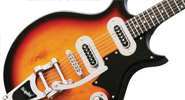

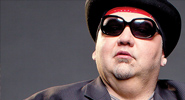

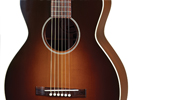

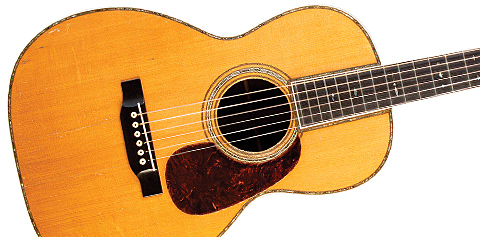




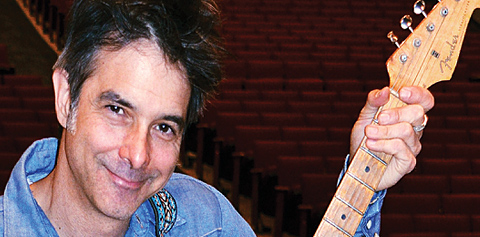
 “The first time the Beatles were on Ed Sullivan, I was in my mother’s womb,” says Jack Petruzzelli. “That was February ’64, but then when they appeared the second time I was out of the womb.” What could be more appropriate for the guitarist/keyboardist of the Fab Faux, the spot-on Beatles tribute band featuring Jimmy Vivino (VG, July ’13) and Will Lee (November ’13) whose “Side 2 Medley” from Abbey Road has more than 100,000 hits on youtube?
“The first time the Beatles were on Ed Sullivan, I was in my mother’s womb,” says Jack Petruzzelli. “That was February ’64, but then when they appeared the second time I was out of the womb.” What could be more appropriate for the guitarist/keyboardist of the Fab Faux, the spot-on Beatles tribute band featuring Jimmy Vivino (VG, July ’13) and Will Lee (November ’13) whose “Side 2 Medley” from Abbey Road has more than 100,000 hits on youtube?